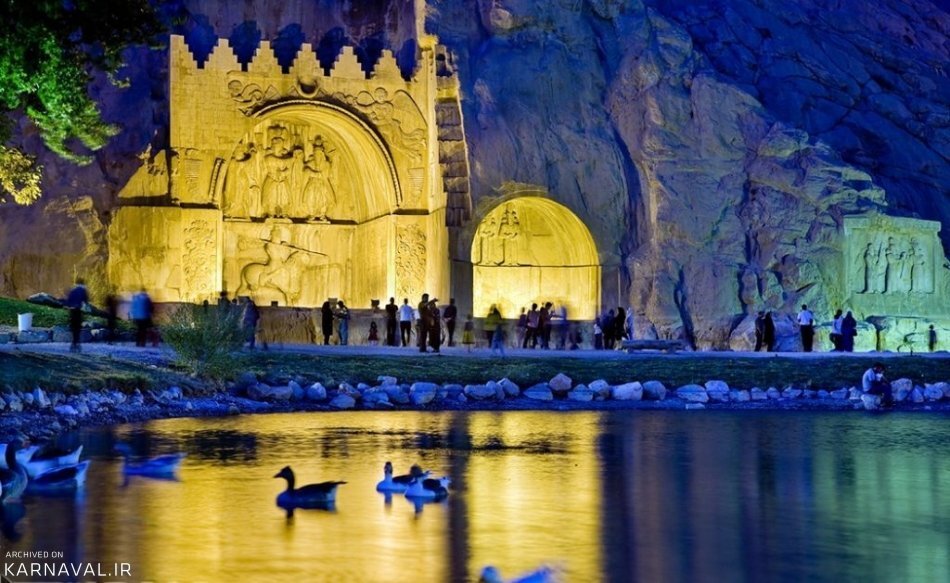Iran preparing to get western Sassanid landscape on UNESCO list

TEHRAN – An Iranian cultural heritage official in Kermanshah province on Sunday said they were preparing to apply to UNESCO for listing a Sassanid archeological landscape on the World Heritage list.
With a high concentration on Taq-e Bostan, which embraces a magnificent series of large bas-relief carvings in Kermanshah, the archeological landscape is sought to be extended to Ctesiphon, an ancient city located 32 km southeast of modern Baghdad that served as the winter capital of the Parthian empire and later of the Sassanid empire, Kermanshah’s tourism chief Mohammadreza Soheili said.
“Based on consultations with the Ministry of Cultural Heritage, Tourism and Handicrafts, it has been decided to pursue registration of a Sassanid axis, centered on Taq-e Bostan, on the World Heritage list,”
“The axis, based on our plan, will be including Sassanid works and monuments from Kermanshah to Ctesiphon.”
“To speed up the preparation course, we have formed a working group of cultural heritage experts under the supersession of Pouya Talebnia who presides over the Taq-e Bostan site,” the official said.
Their main mission is to compile a comprehensive dossier for the Sassanid axis to submit to UNESCO through the Ministry of Cultural Heritage, Tourism and Handicraft by March 2023, the official explained.
Taq-e Bostan embraces incredible Persian heritage on the base of a towering cliff, featuring extraordinary Sassanian bas-reliefs of ancient victorious kings.
Taq-e Bustan was originally the site of a Parthian royal hunting garden, but the Sassanians later added their own regal stamp. Its biggest alcove features elephant-mounted hunting scenes on the sidewalls and highlights the coronation of Khosrow II (r 590–628), beneath which the king rides off in full armor and chain mail (half a millennium before the European Black Prince made it fashionable.).
The second niche shows King Shapur III and his Roman-stomping grandfather Shapur II. To the right of the niches, is a fine tableau again showing Shapur II (r 379–383), in which he is depicted trampling over the Roman emperor Julian the Apostate (whom he defeated in 363) and receiving a crown of blessings from the Zoroastrian god Mithras.
It is said that late afternoon is the best time to visit, as the cliff turns a brilliant orange in the setting sun, which then dies poetically on the far side of the duck pond. The surrounding open-air restaurants rock out till late in the evening and the carvings are warmly floodlit. The site is 10km north of Kermanshah's city center.
The Sassanid era is of very high importance in the history of Iran. Under Sassanids, Persian architecture and arts experienced a general renaissance. Architecture often took grandiose proportions such as palaces at Ctesiphon, Firuzabad, and Sarvestan which are amongst the highlights of the ensemble.
Generally, a Sassanid archaeological landscape represents a highly efficient system of land use and strategic utilization of natural topography in the creation of the earliest cultural centers of the Sassanid civilization.
In 2018, an ensemble of Sassanian historical cities in southern Iran, titled “Sassanid Archaeological Landscape of Fars Region”, was named a UNESCO site. The ensemble comprises eight archaeological sites situated in three geographical parts of Firuzabad, Bishapur, and Sarvestan.
The World Heritage reflects the optimized utilization of natural topography and bears witness to the influence of Achaemenid and Parthian cultural traditions and of Roman art, which latter had a significant impact on the architecture and artistic styles of the Islamic era.
Apart from architecture, crafts such as metalwork and gem engraving grew highly sophisticated, yet scholarship was encouraged by the state. In those years, works from both the East and West were translated into Pahlavi, the language of the Sassanians.
AFM
Leave a Comment